Many are unaware that Washington state is home to many volcanoes, there are actually 12 in total. Furthermore, there are 5 active volcanoes currently present. Despite dangerous eruptions in the past and the threat of eruptions in the future, people chose to live in this region anyway. Let’s take a look at volcanoes and a deep dive into the volcanoes in Washington State.
Volcanic Activity
There are three ways to define the state of a volcano:
- Active
- Dormant
- Extinct
An active volcano is a volcano that has erupted in the last 1,000 years and will likely erupt again in the coming years. Magma pockets are still active beneath the volcano’s crater, and volcanic activity continues, with magma sometimes spewing forth as lava.
Similarly, a dormant volcano has erupted in the past but hasn’t shown signs of being active in recent history. They could still become active or die out and become extinct.
An extinct volcano is a volcano that hasn’t erupted in known history and is most likely considered a mountain. Extinct volcanoes may be home to lush vegetation and populated with people, and they no longer pose a risk to the human population.
How Many Volcanoes Are There in Washington?
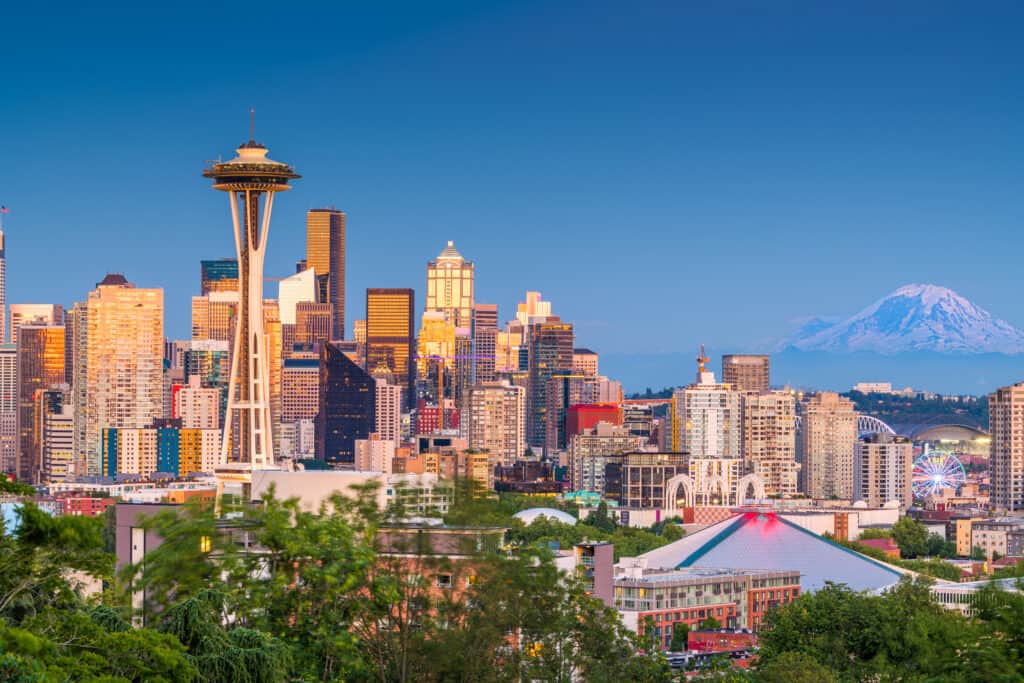
There are 12 volcanoes in Washington State and 5 of them are considered active.
©Sean Pavone/Shutterstock.com
There are twelve different volcanoes in Washington state. These include examples of each of the 5 types of volcanoes: shield, cinder cone, spatter cone, complex and composite/stratovolcanoes.
What Are the 12 Volcanoes in Washington?
The 12 volcanoes in Washington state are:
- Glacier Peak: Stratovolcano
- Goat Rocks: Stratovolcano
- Indian Heaven: Volcanic Field
- Marble Mountain: Shield
- Mount Adams: Stratovolcano
- Mount Baker: Stratovolcano
- Mount Rainier: Stratovolcano
- Mount St. Helens: Stratovolcano
- Signal Peak: Eroded Stratovolcano
- Simcoe: Cinder Cone
- Tumac Mountain: Cinder Cone
- West Crater: Lava Dome
Stratovolcanoes make up a majority of the volcanoes in Washington state. Many of the volcanoes in Washington are ancient and have had thousands upon thousands of years to form into more complex stratovolcanoes.
There are also types listed that are not part of the 5 main types of volcanoes:
A volcanic field is an area around a volcano or multiple volcanoes affected by the lava flow. This area can link numerous volcanoes, stretching between them. However, it is considered part of the volcano.
A lava dome is kind of live a reverse crater. You see, magma bursts up in a dome and creates a solid structure within the center. It is in a bowl, and the lava groups up altogether and makes the mass. This happens if the lava is too thick and dense.
What Are the 5 Active Volcanoes?
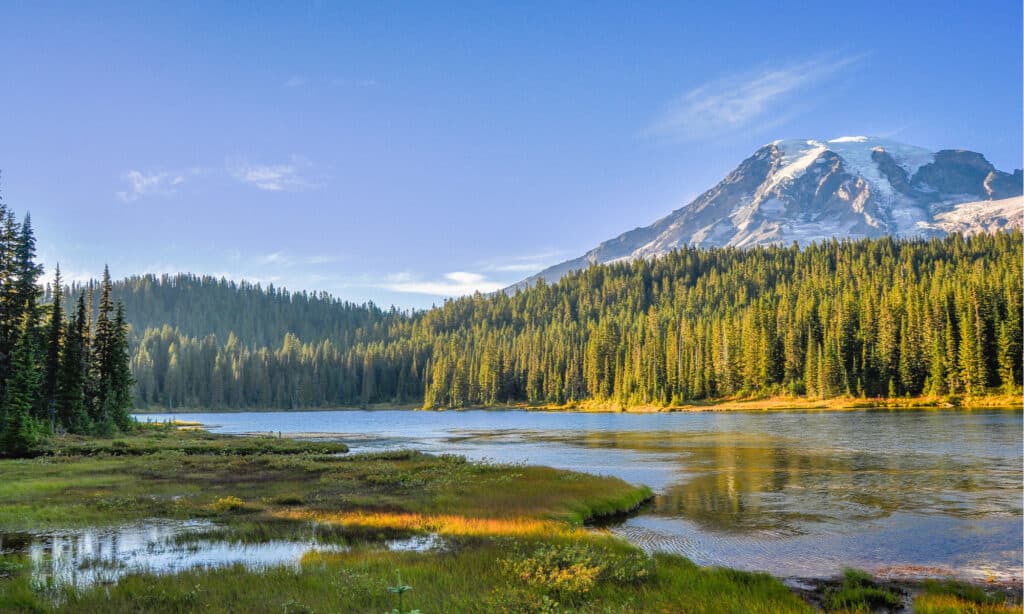
The 5 active volcanoes in Washington state are: Glacier Peak, Mount Adams, Mount Baker, Mount Rainier, and Mount St. Helens
©Vidpen/Shutterstock.com
The 5 active volcanoes in Washington state are:
- Glacier Peak
- Mount Adams
- Mount Baker
- Mount Rainier
- Mount St. Helens
Out of the 12 volcanoes in Washington State, 5 of them are active. All 5 of these active volcanoes are stratovolcanoes. In the last 250 years, 4 of these have erupted. It seems like Washington is a relatively active landscape for volcanoes. For example, California has only had one volcano, Mount Shasta, erupt in the last 200 years. This is because most of these volcanoes are very old. In fact, Mount Rainier is more than a million years old.
Of course, there is no proper way to tell exactly how old these earthly creations are, but scientists have given estimates to it.
When a volcano erupts, there is no telling when it will erupt again. It could explode in a few years, a few hundred, or even a few thousand. Some volcanoes, like Mount Kilauea on the Island of Hawaii, are erupting continuously.
It’s impossible to predict when volcanoes will choose to erupt. Therefore, it’s challenging to predict when it will happen again. That’s what tends to frighten people, the possibility that it could happen randomly, and they won’t have the preparations necessary.
Glacier Peak
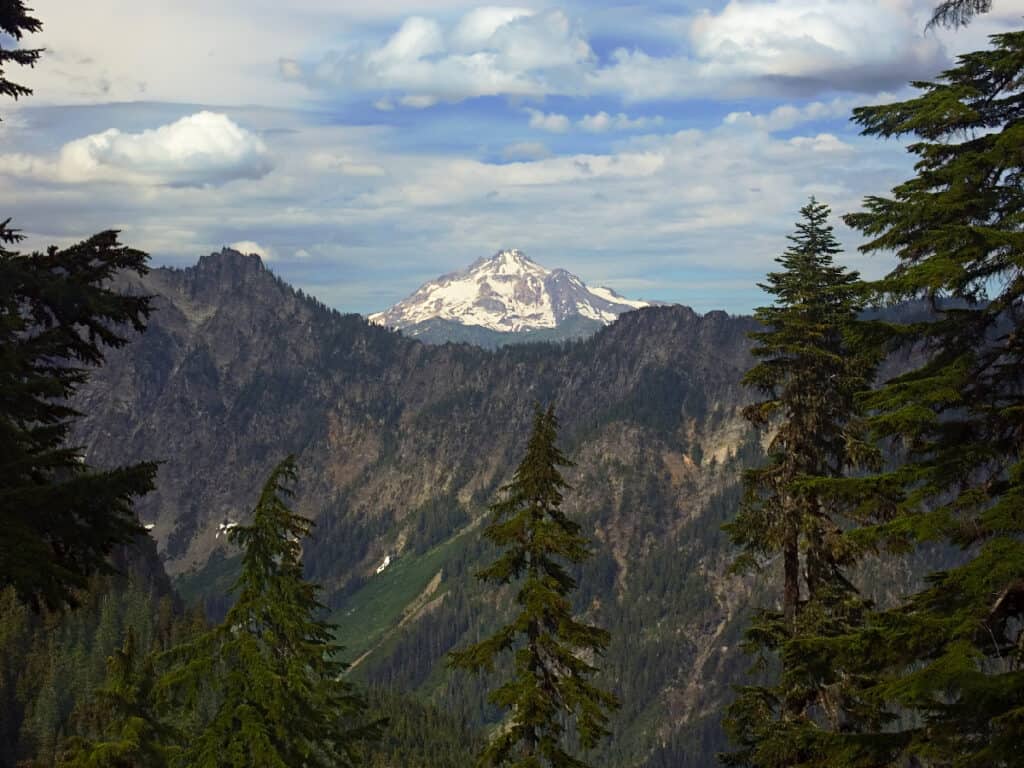
Glacier Peak is a stratovolcano in Washington that hasn’t erupted for the last few hundred years.
©iStock.com/Gene_L
This stratovolcano has not erupted in the last few hundred years. It has lava domes surrounding it, and hot springs are on it.
The name Glacier Peak comes from the eleven different glaciers that circle it. It also peaks above the Glacier National forest.
Mount Adams
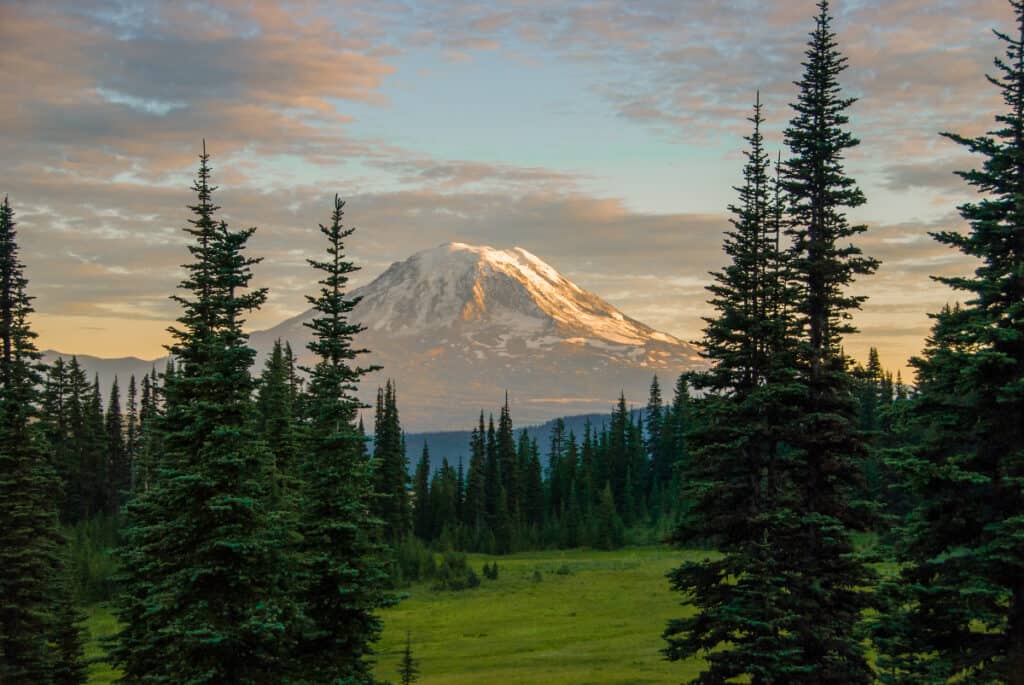
Mount Adams is the second-largest volcano in Washington
©iStock.com/climbbike
In the middle of a volcanic field, Mount Adams takes center stage. It is the second-largest volcano in the region and is known for its explosions and causing damage to the area.
There have been frequent mudslides and one flow about 5,000 years ago, which changed the landscape. It is surrounded by glaciers and has last been active about a thousand years ago.
Mount Baker
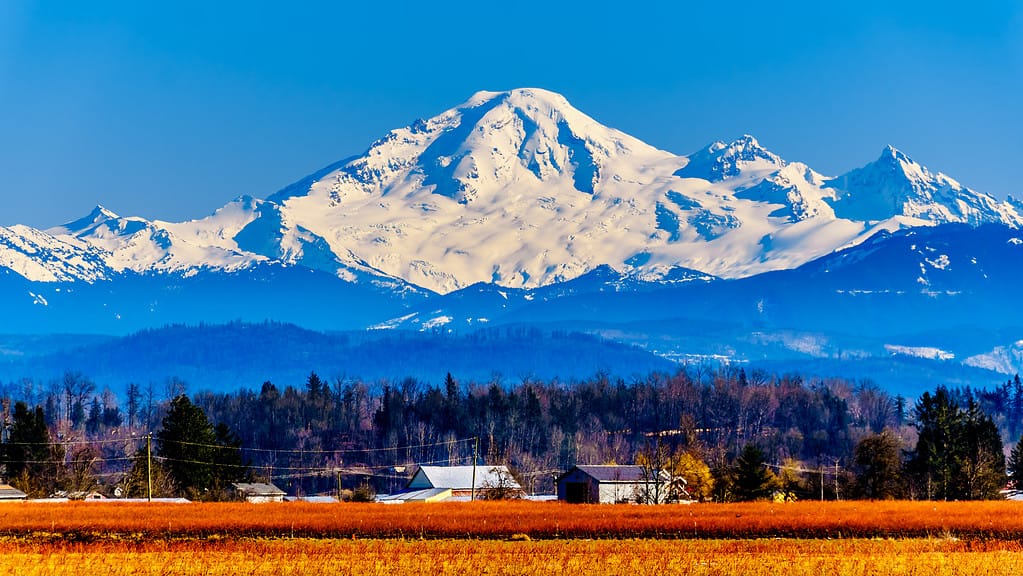
Mount Baker, Washington
©Harry Beugelink/Shutterstock.com
Mount Baker has not had volcanic activity for the last 130 years, but that doesn’t mean it couldn’t happen in the future. Mount Baker is known to cause lahars, which are dangerous mudslides we will discuss further in the article.
The volcanic rumblings can cause earthquakes and shifting materials, changing the landscape on the mountain. When it last erupted, Mount Baker caused massive disruptions. These include thick ash and forest fires.
Mount Rainier
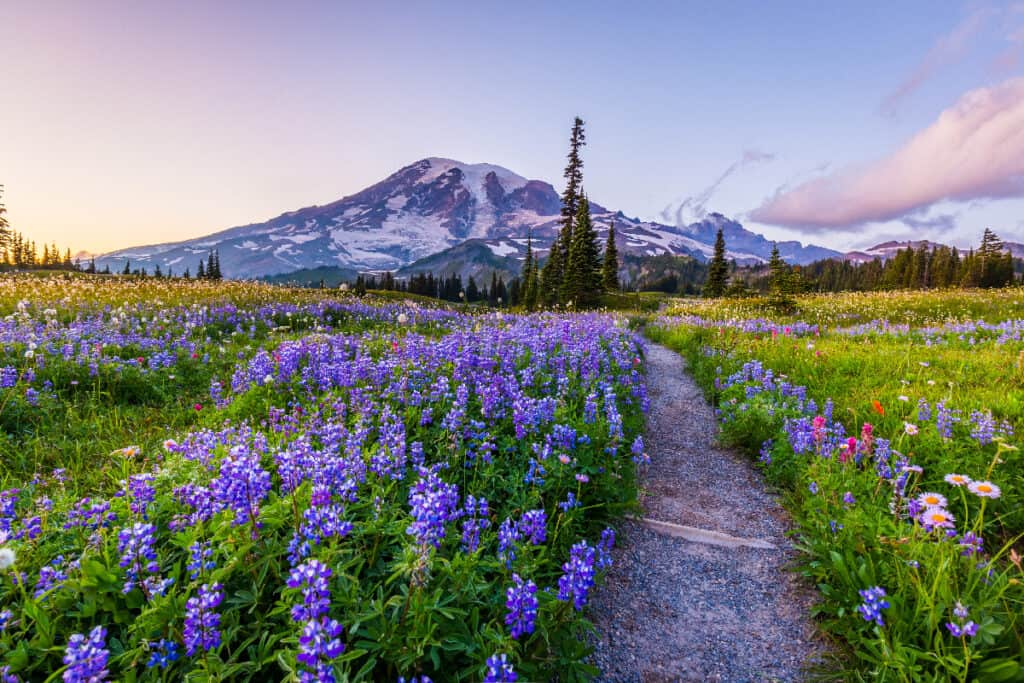
Mount Ranier is the tallest mountain in Washington.
©iStock.com/RomanKhomlyak
Mount Rainier is more well-known a name than some of these other volcanoes. This is because it is the tallest mountain in the region and makes Seattle so wet as it traps the clouds on one side.
There are 26 glaciers surrounding this massive mountain, and when this volcano erupts, it does severe damage to the areas it supports. This includes avalanches, lahars, fires and more.
Mount St. Helen
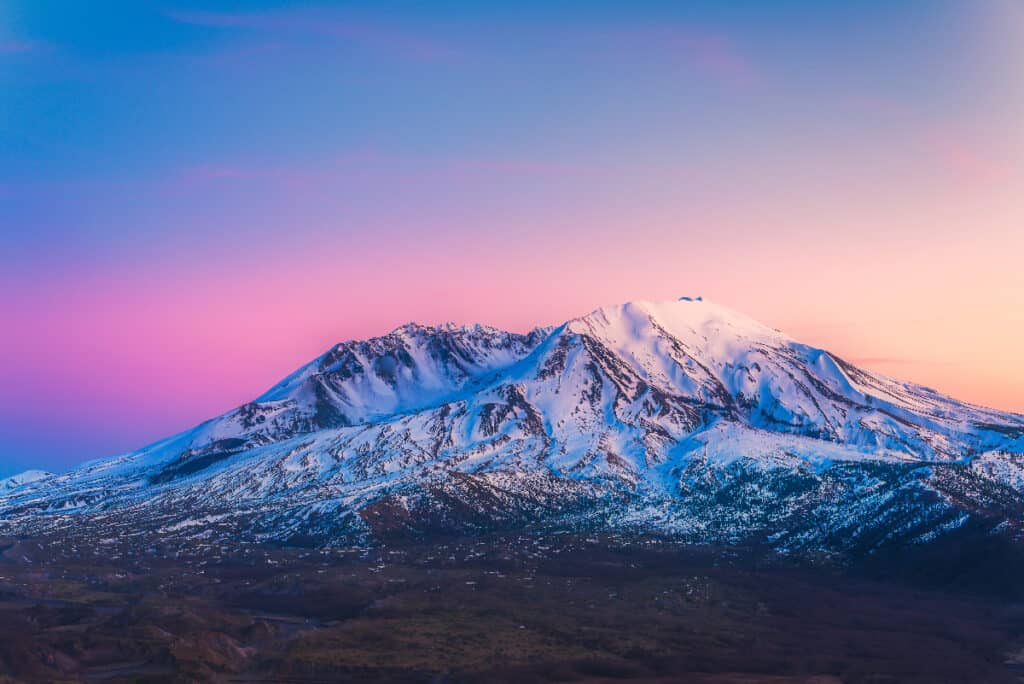
Mount St. Helens is a well-known volcano in Washington that last erupted in 1980.
©Checubus/Shutterstock.com
The most famous volcano here in the United States, Mount St. Helens, last erupted in 1980 and is less than 100,000 years old. A massive chunk of the mountain itself collapsed in the last eruption, and a whole series of events culminated in disastrous results. According to an article in Scientific American, the upper 1,300 feet of the mountain were blown off and 57 people were killed.
Part of the top of the volcano collapsed into the crater and formed a lava dome. For more than six miles, everything surrounding the volcano was destroyed by the lava flow, debris, ash, and avalanches.
It was a terrifying spectacle to witness and was one of the first times Americans saw the destructive and awe-inspiring nature of the volcanic activity.
Yet people still choose to live in the surrounding area, and the region thrives.
What is a Lahar?
When a volcano erupts, it shakes up all the earth surrounding it and everything that has grown up on its surface. That is not a good thing, and it causes powerful earthquakes and rains of ash.
Furthermore, many of these volcanoes in Washington state have glaciers on or surrounding them, and the resulting lava flows melt them and turn them into mudslides and rivers.
These dangerous mudslides made up of glacier melt, debris, and lava decimate the land around them. These can flow down rivers and destroy more beyond the volcano that erupted and end up hurting people.
What’s the Risk of Eruptions in Washington State?
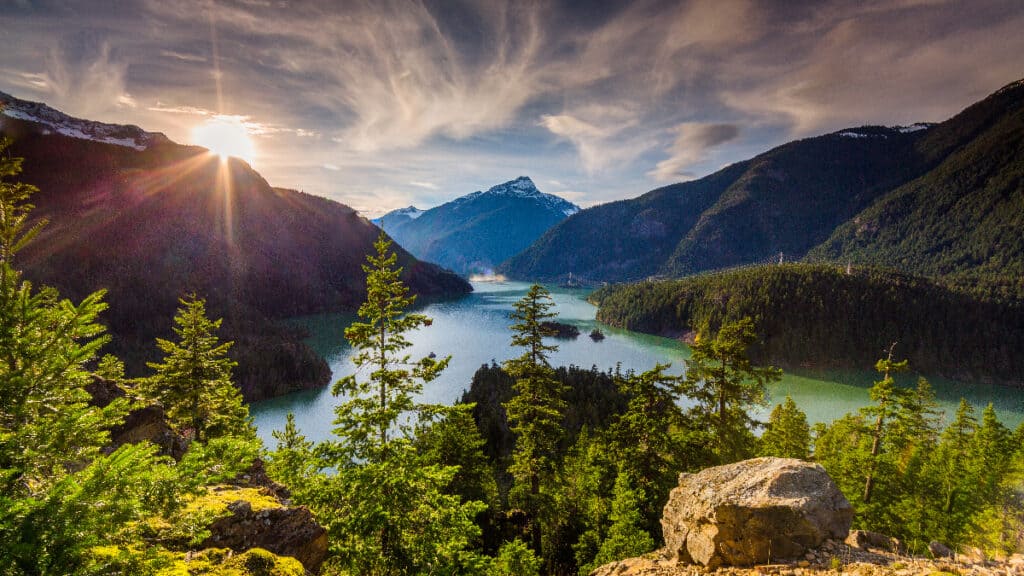
The risk of eruptions in Washington state is varied, but there has been a documented average of about 2 every 100 years
©Roman Khomlyak/Shutterstock.com
The risk of eruptions in Washington state is the same as any place with active or dormant volcanoes: it varies. There have been a documented average of about 2 eruptions every 100 years.
Ultimately it’s up to the people living there to decide if it’s worth the risk. A volcano could erupt in 30 years or a thousand, and there’s no way to predict it.
Volcanoes are capricious, wild, and unyielding. When the magma and gasses decide to escape, there is no hindering an eruption. They will continue to burst forth whether it disrupts our lives or not.
Hot gasses, lava and ash can fill the air for days or weeks afterward, polluting the water and air or blocking out the sun for plants to grow.
An eruption can cause avalanches and other natural disasters and damage untold. The landscape could change forever.
There is no way to predict when a volcano will erupt, and that’s okay. There’s also no way to predict when an earthquake will occur, or a hurricane or a tornado. We only can know once nature gives us a heads up.
The photo featured at the top of this post is © Dene' Miles/Shutterstock.com
Thank you for reading! Have some feedback for us? Contact the AZ Animals editorial team.







